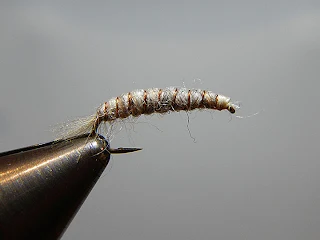Don Bastian is hosting a Tying Trout Flies - Fly Tying Class on March 2 - 4, 2012 at
Fishing Creek Angler Fly Shop and Bed & Breakfast. I highly recommend Don's classes
(see Tying Classic Wet Flies with Don Bastian).
 |
| Your instructor Don Bastian. |
 |
| Fishing Creek Angler Fly Shop and Bed & Breakfast |
 |
| Don's students hard at work. |
Here is the write-up Don sent me.
Fishing Creek Angler provides a perfect location in a lovely north central Pennsylvania rural setting for a winter weekend fly tying class. The Fishing Creek Angler Bed & Breakfast is beautifully appointed with solid wood walls, floors, and trim, with an open cathedral ceiling and spacious Great Room and dining area. There are four bedrooms to accommodate eight guests. Participants can enjoy the fly shop, bed & breakfast, and classroom without leaving the building. Bring your slippers!
These classes provide an educational and fun opportunity to learn from Don Bastian’s instructional expertise, knowledge, techniques, and commercial fly tying experience acquired during 48 years of fly tying. A wide variety of specialized procedures and material applications for tying all types of trout flies will be presented in this class.
- Dry flies – Comparaduns, parachutes, Marinaro Thorax Duns, Spinners, Catskill drys, Wulffs, etc.
- Multiple methods of applying and using hackle, tailing materials, and dubbing. Tips, tricks, & techniques for working with a wide variety of tying materials. Proper proportions, material selection, grading, application, & use. Instructional expertise to help solve your fly tying problems, challenges, and difficulties. Student requests welcomed!
- We will be tying drys, soft-hackles, nymphs, spinners, streamer & bucktail patterns, emergers.
Package price of this class is $350.00 based on double-occupancy, and includes room tax. 50% deposit required to secure reservation. Credit cards accepted. Call or e-mail Fishing Creek Angler to make your reservation. Package Price Includes:
- Friday evening dinner featuring Mary-Ann’s lasagna with salad, garlic bread & home made dessert.
- Full breakfast of bacon, eggs, and toast - Saturday & Sunday.
- Lee’s Saturday evening steak Bar-B-Q with baked potato, salad, & home made dessert.
- Two nights double-occupancy lodging at the Fishing Creek Angler Bed & Breakfast.
- Relaxing evenings in the B & B with your favorite libation; lots of fly tying talk and informal tying sessions.
Saturday class runs from 9:00 to 5:00 PM with a break for lunch. Sunday session is from 9:00 until noon. Attending students must bring vise, light, tools, and a list of materials (provided upon reservation). Check-in is anytime after 1:00 PM on Friday March 2nd. Come early to browse in the Fly Shop or simply relax, meet new friends, tie a few flies, and enjoy your favorite beverage. Feel free to bring beverages of your choice.
Contact Don Bastian via e-mail at:
dwbastian@chilitech.net with specific questions or requests.
Don Bastian has forty-eight years fly tying experience including a decade long stint as a commercial tyer. He has nearly 765 classic wet fly, streamer, and bucktail patterns published in the book Forgotten Flies. Tying Classic Wet Flies was released in November 2004. In August 2007 two more Don Bastian DVD’s were released - Advanced Classic Wet Flies, and Traditional Streamers and Bucktails. He has been a fly tying instructor for over twenty six years. References are available.
Attending students are required to have some fly tying experience.











































